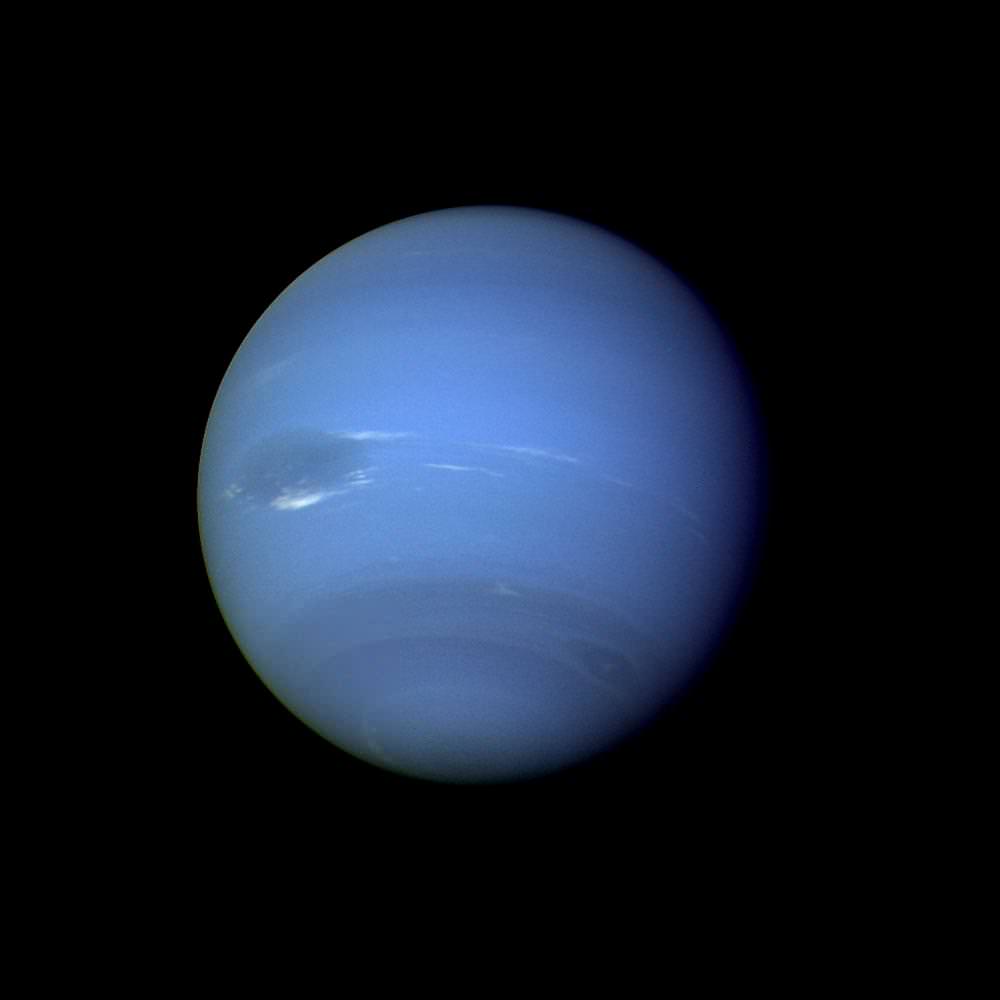[/caption]
The following Neptune fact sheet is based on NASA’s excellent planetary fact sheets. Neptune is the 8th planet from the Sun, and it requires a telescope to be able to see it.
Mass: 102.43 x 1024 kg
Volume: 6,254 x 1010 km3
Average radius: 24,622 km
Average diameter: 49,244 km
Mean density: 1.638 g/cm3
Escape velocity: 23.5 km/s
Surface gravity: 11.15 m/s2
Natural satellites: 13
Rings? – Yes
Semimajor axis: 4,495,060,000 km
Orbit period: 60,189 days
Perihelion: 4,444,450,000 km
Aphelion: 4,545,670,000 km
Mean orbital velocity: 5.43 km/s
Orbit inclination: 1.769°
Orbit eccentricity: 0.0113
Sidereal rotation period: 16.11 hours
Length of day: 16.11 hours
Axial tilt: 28.32°
Discovery: 23 September 1846
Minimum distance from Earth: 4,305,900,000 km
Maximum distance from Earth: 4,687,300,000 km
Maximum apparent diameter from Earth: 2.4 arc seconds
Minimum apparent diameter from Earth: 2.2 arc seconds
Maximum visual magnitude: 7.78
We’ve written many articles about Neptune for Universe Today. Here’s an article about the color of Neptune, and here’s an article about the atmosphere of Neptune.
If you’d like more info on Neptune, check out Hubblesite’s News Releases about Neptune, and here’s a link to NASA’s Solar System Exploration Guide to Neptune.
We’ve also recorded an entire episode of Astronomy Cast just about Neptune. Listen here, Episode 63: Neptune.

